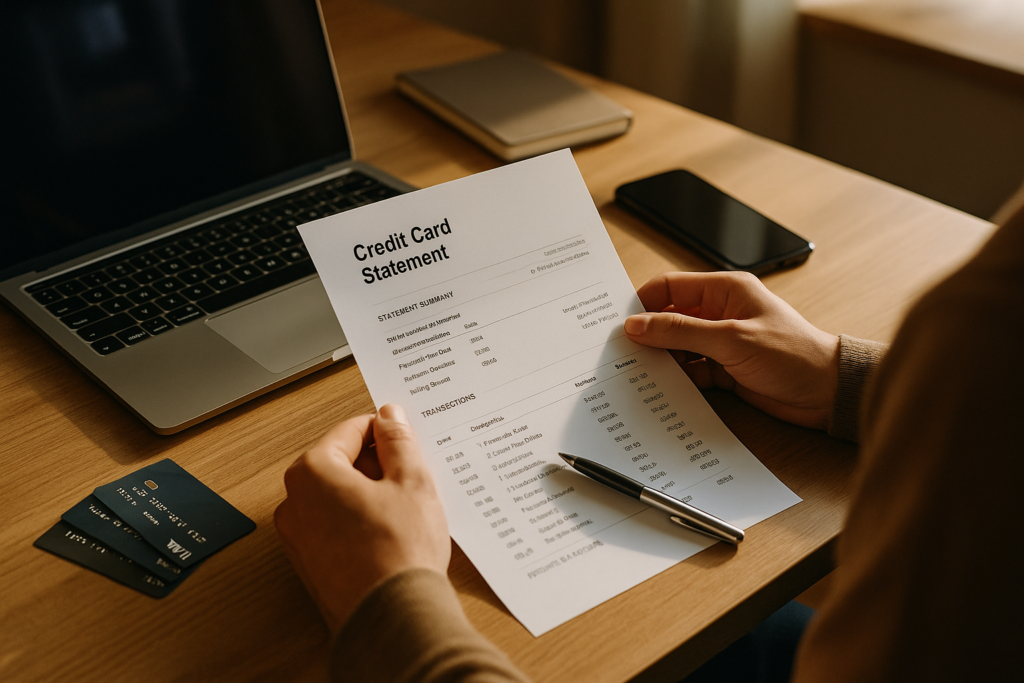Understanding Your Credit Card Statement: A Comprehensive Guide for 2025
Managing personal finances effectively starts with understanding your credit card statement. It might seem complicated at first glance, but once you learn how to read it, you’ll be better equipped to monitor your spending, detect errors, and plan your budget smartly. Whether you’re a new cardholder or just want to improve your financial literacy, this step-by-step guide will walk you through all key components of a credit card statement in 2025.
Why Is It Important to Read Your Credit Card Statement?
- Identify unauthorized transactions: Spot fraudulent or mistaken charges early.
- Monitor spending habits: Understand where your money goes and control it.
- Calculate your payments: Know exactly how much you owe and avoid late fees.
- Track rewards and offers: Ensure you’re earning benefits like cashback or travel rewards.
- Prepare for taxes: Collect necessary information for tax deductions or reporting.
Key Components of a Credit Card Statement
Most credit card statements follow a similar format. Here’s what to look for:
1. Statement Summary
This is the first part of your statement, offering a snapshot of your account activity for the billing period. It usually includes:
- Total Outstanding Balance: The amount you owe at the end of the billing cycle.
- Minimum Payment Due: The least amount you must pay to keep your account in good standing.
- Payment Due Date: The last date to pay without incurring late fees.
- Billing Period: The start and end dates of the current cycle.
2. Transactions List
This section details every purchase, payment, or adjustment made during the billing cycle. It typically includes:
- Date of Transaction: When the transaction occurred.
- Description: Where or what the purchase was for (merchant name).
- Amount: The cost of each transaction.
- Transaction Type: Purchase, payment, refund, or fee.
3. Payments and Credits
All payments you’ve made and credits earned will be listed here. Check whether your payments are applied correctly and that rewards or cashback are credited.
4. Fees
Any charges such as late fees, annual fees, or foreign transaction fees are itemized here. Keeping track helps avoid unexpected costs.
5. Finance Charges and Interest
If you carry a balance, this section shows the interest accrued. It’s crucial to understand how interest affects your total payable amount and how to minimize it by paying more than the minimum.
6. Rewards, Points, or Cashbacks
This part summarizes the rewards earned in the billing cycle, such as cashback, travel points, or other benefits. Verify that the rewards have been applied correctly.
How to Read and Analyze Your Credit Card Statement
- Verify Personal Details: Ensure your name, address, and account number are correct.
- Review the Statement Summary: Check your total balance, payment due date, and minimum payment.
- Scrutinize transactions: Look for unfamiliar or suspicious charges. Compare with your purchase receipts.
- Check for errors: Confirm each transaction’s accuracy and that no unrecognized entries exist.
- Assess your payments: Ensure that payments you’ve made are reflected correctly.
- Understand fees and interest: Note any charges and plan to pay more to reduce interest, especially if you carry a balance.
- Review rewards: Confirm cashback, points, or benefit calculations align with your account activity.
- Plan your payment: Based on your total balance, decide on a payment amount that helps avoid interest charges.
Tips for Managing Your Credit Card Effectively
- Always pay at least the minimum amount due before the due date.
- Try to pay the full statement balance to avoid interest charges, especially if you have a zero-interest or cashback credit card.
- Keep an eye on your credit utilization ratio — ideally below 30% of your credit limit.
- Regularly monitor your statement for signs of fraud or errors.
- Utilize rewards programs smartly to maximize benefits.
Frequently Asked Questions (FAQs)
1. What should I do if I find a mistake on my credit card statement?
Immediately contact your credit card issuer through their customer service. Dispute the unauthorized or incorrect charges and request a resolution. More details can be found at our About Us page.
2. How often should I review my credit card statement?
It’s best to review your statement monthly, right after you receive it. This ensures timely detection of errors and suspicious activity.
3. What is the best way to understand credit card interest charges?
Interest is usually calculated based on your daily balance and the annual percentage rate (APR). Paying your entire balance or more than the minimum reduces accrued interest. Learn more at Credit Score Tips.
4. Can I access my credit card statement online?
Yes, most banks and credit card providers offer online portals where you can view and download your statements securely. Consider setting up e-statements to stay eco-friendly and organized.
Start Managing Your Credit Smartly Today
Reading your credit card statement might seem mundane, but it’s a vital part of financial control. Staying vigilant helps prevent fraud, avoid unnecessary costs, and optimize your benefits. If you want to explore the best credit cards suited for your needs, visit Find My Card for tailored options.

